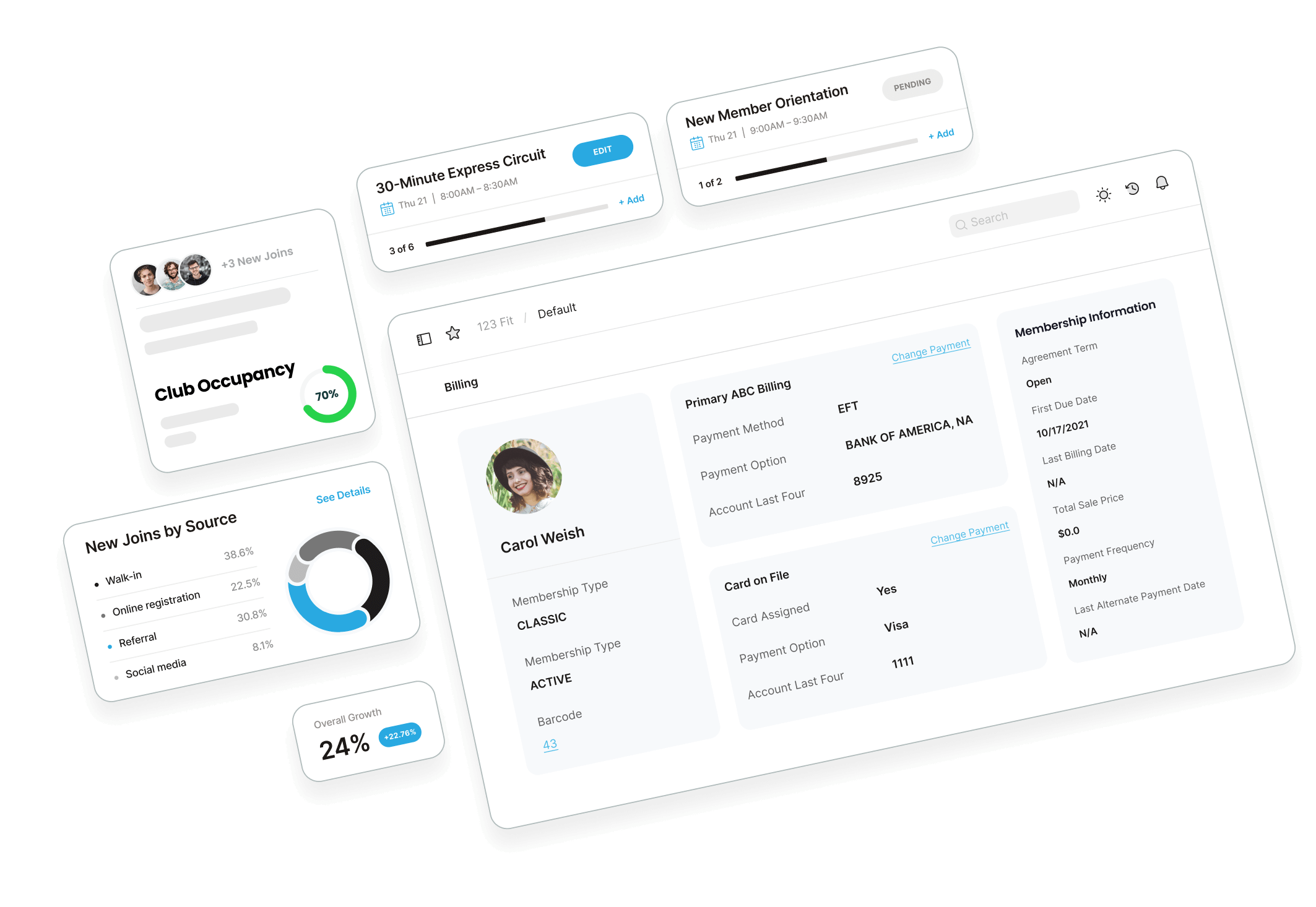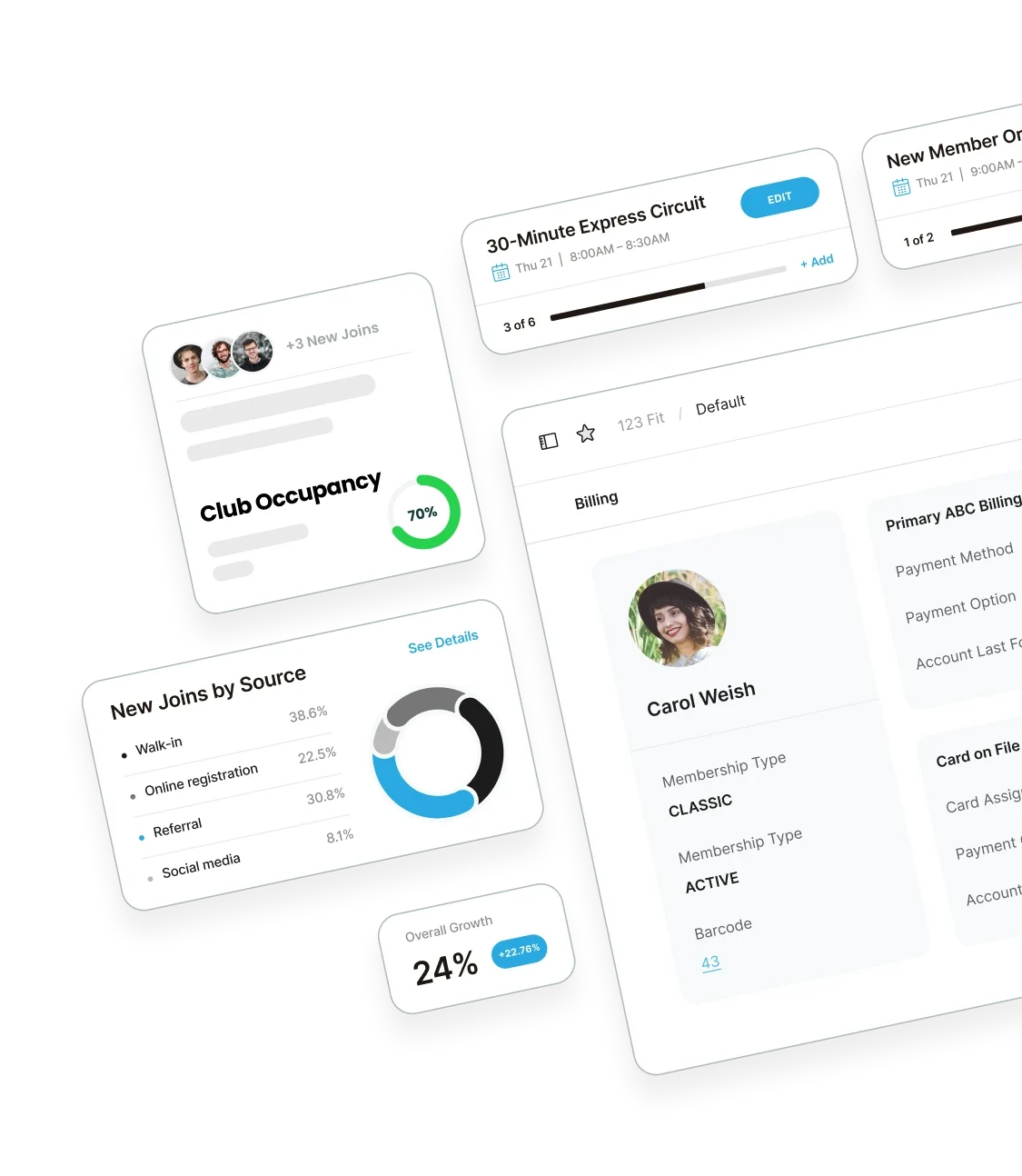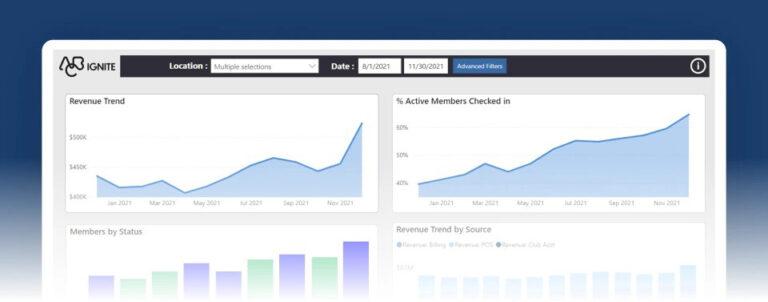Starting a gym in 2025 is an exciting venture, but it’s no small task. There’s a lot to consider, from figuring out gym startup costs to navigating the challenges of building a brand in a competitive market. It’s not just about having the right equipment or the perfect location; you’ll also need to balance a solid business plan, manage ongoing expenses and attract the right clientele.
Keep reading as we walk through everything you need to consider, from developing a winning strategy to making smart budgeting decisions to help your gym thrive.
1. Create a comprehensive gym business plan
A well-structured business plan is the backbone of your gym’s success. It should clearly define your mission, target audience and the types of services you’ll offer (e.g., personal training, group fitness classes, etc.).
The plan must also outline your marketing strategy, competitive analysis, financial projections and business goals. Key areas to focus on include:
- Target Audience: Identify your niche. Will you cater to beginners, seasoned athletes or families?
- Revenue Streams: Consider multiple income sources like membership fees, personal training, retail sales or premium services.
- Funding: How are you going to afford to set up your business?
- Paperwork & Admin: What licenses are needed? Are there zoning laws that need to be followed? What about insurance?
Managing the details of a gym business can quickly become overwhelming without the right systems in place. Disorganized data or missed bookings can lead to poor member experience and operational inefficiencies. That’s why it’s crucial to have tools that centralize and streamline these processes.
Platforms like ABC Ignite simplify managing member information, automating tasks like bookings, payments and contracts, so you can focus on delivering a top-tier fitness experience without getting bogged down by admin work.
2. Conduct market research
Conducting market research helps you understand your competition, customer preferences and demand in your area. A deep dive into local demographics will enable you to find a niche where your gym can thrive.
Questions to address during research include:
- What fitness trends are popular in your region?
- How saturated is the market with gyms or fitness centers?
- What gap can your gym fill that others haven’t?
This research will allow you to tailor your services and pricing to meet local demand, helping to differentiate your business.
3. Estimate gym startup costs
Gym startup costs can vary based on the size, location and services offered. The most common expenses include:
- Lease and Renovation Costs: The price for renting and renovating your space, including plumbing, electrical and layout design.
- Gym Equipment: Cardio machines, free weights, strength-training equipment and specialty gear like yoga mats or boxing rings.
- Licensing and Permits: Local business licenses, health and safety permits and compliance certifications.
- Software and Technology: Gym management software, payment processing systems and security systems.
On average, gym startup costs can range from $10,000 for a small studio to upwards of $500,000 for larger facilities.
4. Select the right location for your gym
Location is key to your gym’s success. Ideally, choose a high-traffic area near complementary businesses (e.g., wellness centers, health food stores). Look for locations that are easy to access, offer ample parking, and have enough space for equipment, classes and future expansion. Consider whether your gym will be located in a residential, business or mixed-use area.
When choosing your location, ask:
- Does it offer enough space for your planned services?
- Is it accessible and visible to potential members?
- Will you need to buy the property outright, or can you lease it?
- Are there any zoning issues or permits you need to be aware of?
Your location should be both convenient and appealing to your target market. Try to think of your own experiences with businesses to get the right idea of what your location needs. Parking, driving distance, safety and location size are usually the biggest factors.
5. Securing funding for your gym
Once you’ve estimated your startup costs, securing funding is the next step. Popular funding options for gym owners include:
Choosing the Right Gym Management Software: 7 Essential Questions
Discover more- Small Business Loans: Consider government loans, traditional bank loans or private lenders.
- Investors: Approach private investors with a strong business plan to secure capital.
- Crowdfunding: Launch a campaign on platforms like Kickstarter to raise funds from supporters.
Choosing the right funding option depends on your business model and financial needs. Be prepared to present a clear path to profitability, as this will improve your chances of securing investment.
6. Purchase gym equipment and software
Investing in high-quality, durable gym equipment is critical. The type of equipment will depend on your niche; a strength training gym will need different gear than a yoga studio. Plus, gym management software can streamline operations by handling member check-ins, class scheduling and billing.
Recommended investments include:
- Cardio and Strength Equipment: Treadmills, stationary bikes, free weights and resistance machines.
- Specialty Equipment: Based on your niche, consider kettlebells, yoga mats or Pilates reformers.
- Leasing vs. Owning Equipment: Evaluate whether to lease or purchase your equipment. Leasing can lower upfront costs and provide flexibility for upgrades while owning can save money in the long run.
- Management Software: Use platforms like ABC Ignite to automate key operations and improve member engagement.
7. Build a strong gym team
Your staff will be the face of your gym, so hire certified trainers, group fitness instructors, and front desk personnel who align with your gym’s values and goals. A strong team improves member retention and helps create a supportive, motivating atmosphere.
Look for individuals with:
- Certification in their areas of expertise (personal training, nutrition, etc.)
- Strong interpersonal skills to foster member relationships
Gym management software can also play a key role in managing staff schedules, payments and contracts, making day-to-day operations much smoother.
Key roles to consider:
- Personal Trainers: Certified professionals who can deliver personalized programs.
- Front Desk Staff: Friendly individuals who manage memberships and provide excellent customer service.
- Group Instructors: Enthusiastic coaches who lead classes and drive engagement
8. Develop a marketing strategy
To build buzz and attract members, launch your marketing strategy early. A multi-channel marketing approach will help maximize your reach and increase early sign-ups. Use digital marketing platforms, social media and partnerships to raise awareness about your gym.
Effective marketing tactics include:
- Pre-launch Offers: Offer early-bird discounts or free trials to generate interest.
- Social Media Campaigns: Engage your audience with teasers, fitness tips and success stories.
- Referral Programs: Encourage existing members to refer friends for special discounts.
9. Focus on member retention
After opening your gym, retaining members becomes a top priority. Building a strong sense of community, offering personalized experiences and maintaining consistent communication will help foster loyalty and keep members engaged.
Strategies to improve retention:
- Personalized Training Plans: Offer tailored workout programs based on individual goals.
- Community Events: Host fitness challenges, workshops or social events to create a sense of belonging.
- Loyalty Programs: Reward long-term members with special perks like discounts on personal training or retail items.
10. Monitor long-term costs and profitability
Managing long-term costs is essential to maintaining profitability. Regularly review your operating expenses, including rent, utilities, staff salaries and equipment maintenance. By staying on top of these expenses and adjusting your pricing or services accordingly, you can ensure your gym remains financially sustainable.
ABC Ignite can help you monitor key metrics like revenue collection, cash flow and member retention, keeping your business on track for long-term success.
Ready to open your club?
Starting a gym in 2025 is an exciting venture with plenty of opportunities to impact your community’s fitness journey. With tools like ABC Ignite to support your operations and a clear, actionable plan in place, you’ll be ready to open the doors to a thriving fitness business.
ABC Ignite’s all-in-one, gym management platform streamlines everything from member management and billing to scheduling and reporting. By automating daily operations, you’ll save valuable time and reduce administrative burdens. Plus, its data-driven insights help you make smarter business decisions, keeping costs down while improving member experiences, allowing you to focus on growth and member engagement.


![ABC-Ignite]-Blog_header-monthly-product-updates_Nov_](https://ignite.abcfitness.com/wp-content/uploads/2025/11/ABC-Ignite-Blog_header-monthly-product-updates_Nov_-400x160.png)
![[ABC-Ignite]-Blog_Header_Engagement-App](https://ignite.abcfitness.com/wp-content/uploads/2025/11/ABC-Ignite-Blog_Header_Engagement-App-400x160.jpg)

![[ABC-Ignite]-Blog_Banner_2025-Payment-links](https://ignite.abcfitness.com/wp-content/uploads/2025/11/ABC-Ignite-Blog_Banner_2025-Payment-links-400x160.jpg)
![[Blog]_ABC-Ignite-October-Launches-Header](https://ignite.abcfitness.com/wp-content/uploads/2025/11/Blog_ABC-Ignite-October-Launches-Header-400x160.png)
![[ABC-Ignite]-Blog_header-monthly-product-updates_Oct](https://ignite.abcfitness.com/wp-content/uploads/2025/11/ABC-Ignite-Blog_header-monthly-product-updates_Oct-400x160.png)
![[ABC-Ignite]-Blog_Banner_2025Acquire-in-Ignite Engagement](https://ignite.abcfitness.com/wp-content/uploads/2025/11/ABC-Ignite-Blog_Banner_2025Acquire-in-Ignite-Engagement-400x160.jpg)



